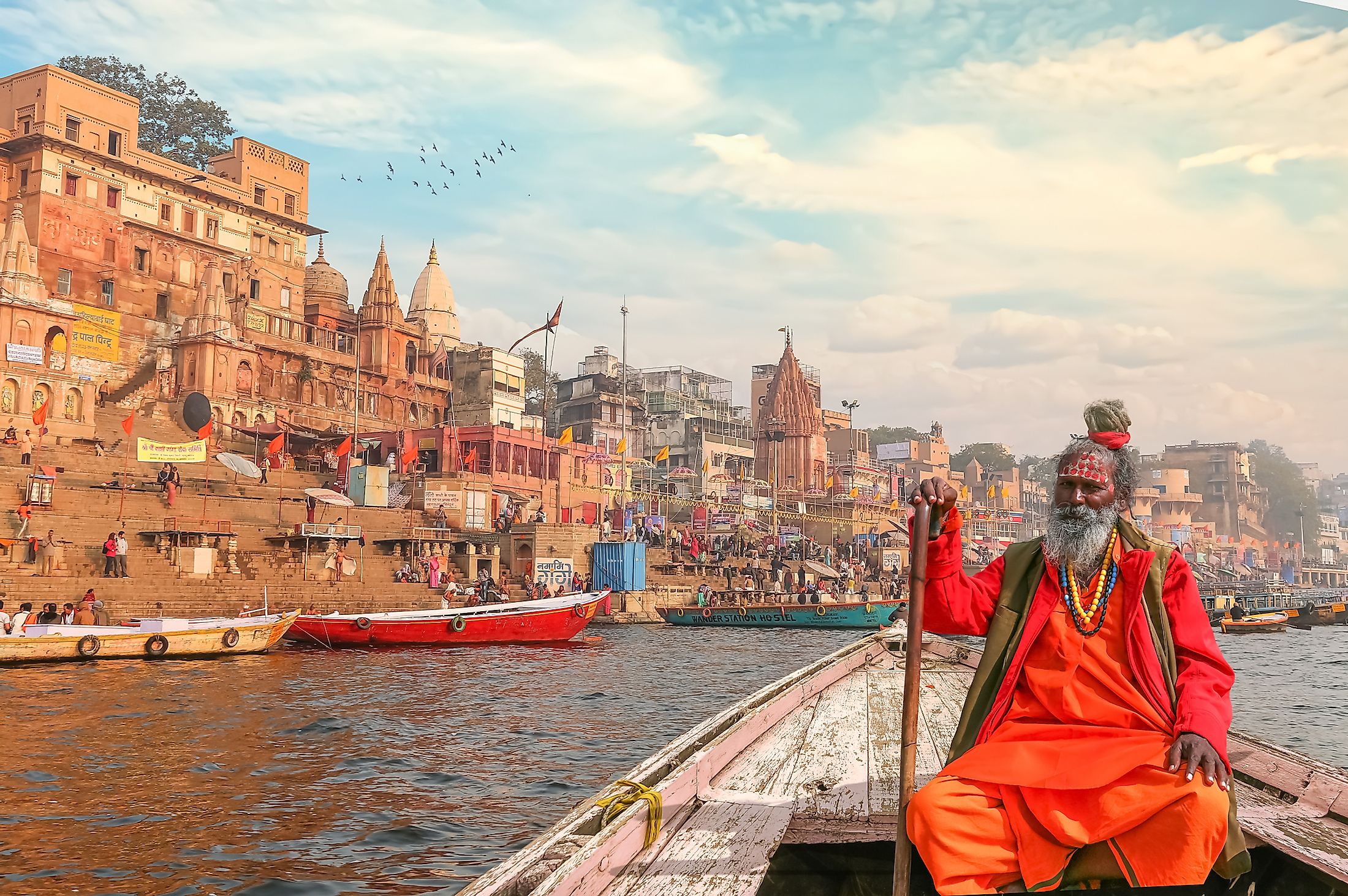
River Ganges
Also referred to as “Ganga”, the Ganges River is a long transboundary river in the Continent of Asia that flows through some of the most densely populated regions in the two major countries of India and Bangladesh. Rising in the western Himalayas in the Indian State of Uttarakhand, the Ganges River flows for more than 2,525km across the Gangetic Plains in the northern part of India into Bangladesh, where it forms a huge delta with the Brahmaputra River before draining into the Bay of Bengal. The Ganges River Basin is considered India’s largest river basin and drains about one-fourth of India’s territory. The Ganges is considered the world’s 3rd largest river by discharge having an average discharge volume of 38,129 m3/s.
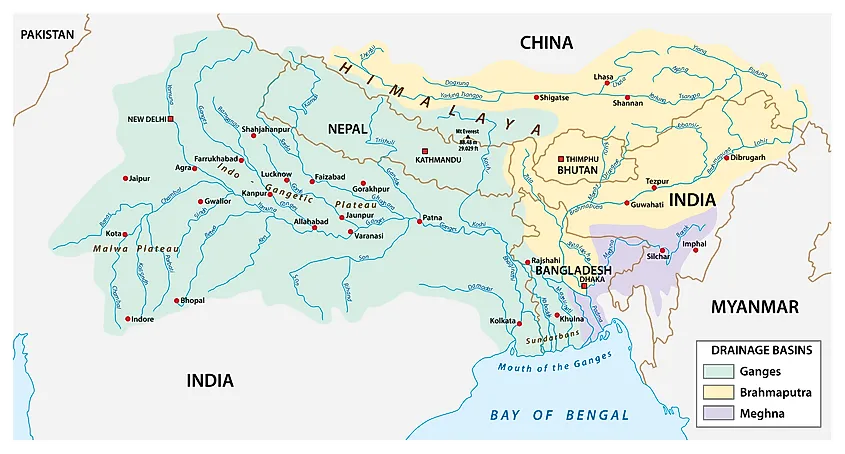
The Ganges River is regarded as the “most sacred” and worshipped as Goddess “Ma Ganga” or “Mother Ganges” by millions of Hindus in India and around the world. The Ganges River and its numerous tributaries serve as a vital source of water for millions of people who live along its course and are completely dependent on the river for their sustenance.
Geography
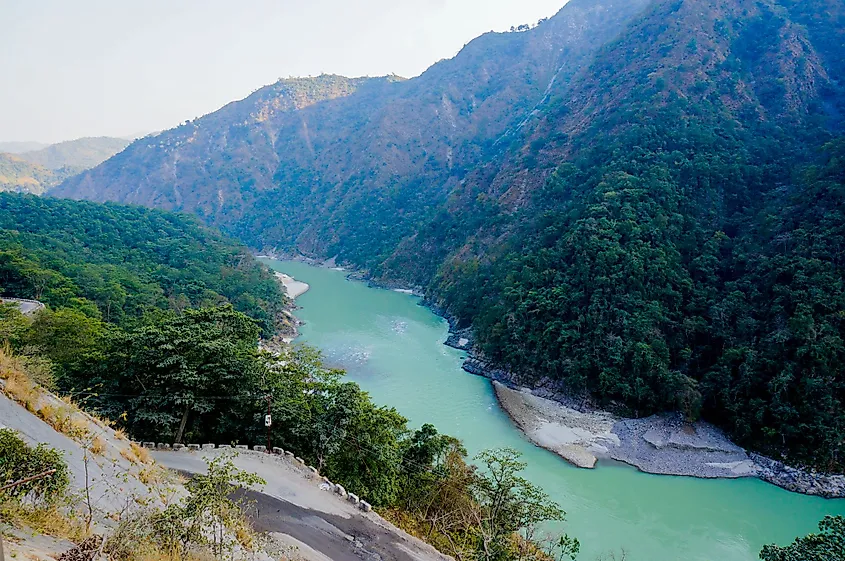
The Ganges River originates in the Great Himalayas on the Indian side of its boundary with the Tibet Autonomous Region. The six headstreams of the river Ganga namely, the Alaknanda, Bhagirathi, Dhauliganga, Mandakini, Nandakini, and Pindar all originate from the mountainous regions in the northern part of the Indian State of Uttarakhand. The confluences of these headstreams are known as “Panch Prayag”. The two main headstreams of the river Ganga are the Alaknanda - the headwaters of which are formed by snowmelt from the mountain peaks of Kamet, Nanda Devi, and Trisul; and the Bhagirathi – which rises at an elevation of about 4,356m in Gomukh, at the base of the Gangotri Glacier.
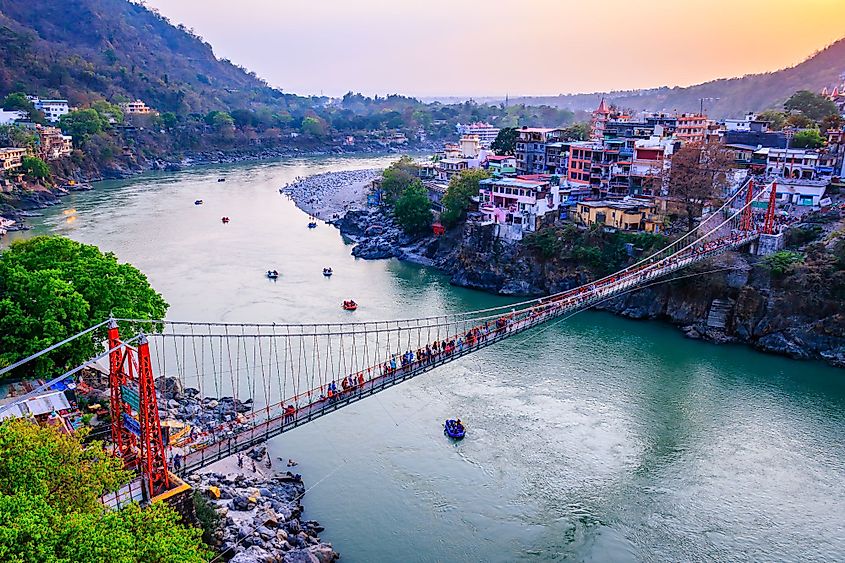
The melting ice of the Gangotri Glacier forms the crystal-clear waters of the Bhagirathi River, which then flows down the Himalayas and unites with the Alaknanda River at Devprayag to form the main Ganges River. After flowing for about 256.90km southwestwards through the Siwalik Range, the Ganga River emerges from the mountains at the city of Rishikesh in the foothills of the Himalayas. The river then flows onto the Indo-Gangetic Plain at Haridwar, an extremely revered pilgrimage site for the Hindus.
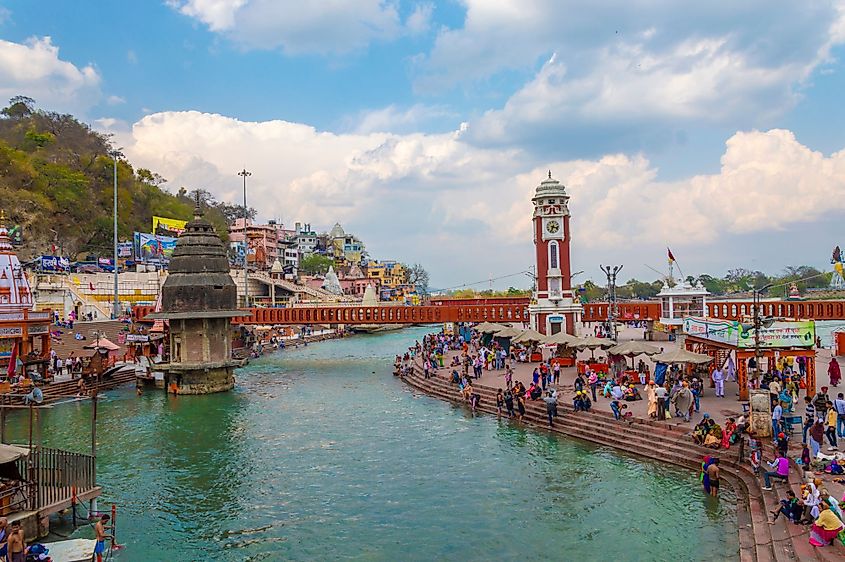
After descending at Haridwar, the Ganges River then starts to flow southeastwards passing through the cities of Farukhabad, Kannauj, Varanasi, and Kanpur in the Indian State of Uttar Pradesh. Along its course in the State of Uttar Pradesh, the Ganges River is joined by its three left-bank tributaries: the Ramganga River, the Ghaghara River, and the Gomti River. The Ghaghara River forms the largest tributary of the Ganges River with an average annual flow of 2,991m3/s. The main right-bank tributary of the Ganga River is the 1,444km long Yamuna River, which joins the Ganges at the revered Triveni Sangam near Allahabad (Prayagraj). Another right-bank tributary of the Ganges is the Tons/Tamsa River, which flows northwards from the Kaimur Mountain range and joins the Ganges River just below Allahabad. The Yamuna forms the 2nd largest tributary of the Ganges with an average annual flow of 2,948m3/s.
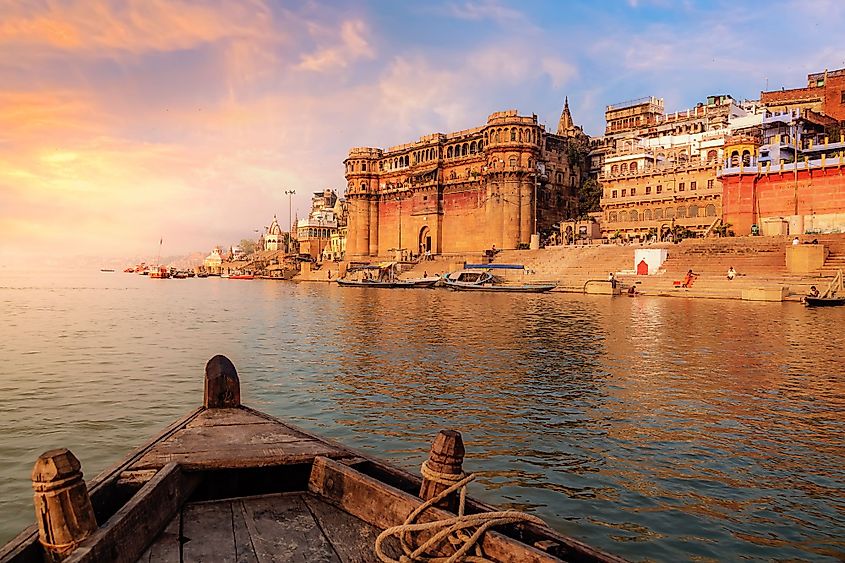
From Uttar Pradesh, the Ganges River now flows into the Indian State of Bihar where it receives water to form its major tributaries like Son River, the Gandaki River, and the Kosi River. The Kosi forms the 3rd largest tributary of the Ganges with an average annual flow of 2,166m3/s. The Ganges River then flows in the south-southeast direction and reaches Farakka in the Murshidabad district of the Indian State of West Bengal. The Mahananda River joins the Ganga from the north. Just after Farakka, the River Ganges bifurcates into the 260km long distributary – the Bhagirathi-Hooghly River and the 120km long distributary - the Padma River. The Hooghly River, which is formed by the confluence of the Bhagirathi and Ajay Rivers is joined by two of its tributaries – the Damodar and the Rupnarayan Rivers. The Hooghly River passes through Murshidabad, Nabadwip, Howrah, and Kolkata and drains into the Bay of Bengal close to Sagar Island.
From the Indian State of West Bengal, the principal branch of the Ganges River flows into Bangladesh, where it is referred to as the Padma River. The Padma River is joined by the Jamuna River, which is the largest distributary of the mighty Brahmaputra River. This combined flow of the Padma-Jamuna Rivers then joins the Meghna River. The three rivers then flow through the delta region to enter the Meghna Estuary and finally drain into the Bay of Bengal.
The Ganges Delta
The Ganges Delta is situated in the Bengal region of the Indian subcontinent and approximately two-thirds of it is located in Bangladesh, while the remaining one-third forms a part of the Indian State of West Bengal. The Ganges Delta is considered to be an arc-shaped delta and is positioned at the meeting point of the three tectonic plates namely, the Burma Plate, the Eurasian Plate, and the Indian Plate. Nicknamed as the “Green Delta”, the Ganges Delta is the world’s largest river delta that has an area of 64,000 sq. km and is also one of the most fertile regions on the planet. The delta is a network of channels, swamps, lakes, and sediments of the floodplains. The Ganges Delta empties into the Bay of Bengal and stretches from the Hooghly River to the Meghna River.
Brief History
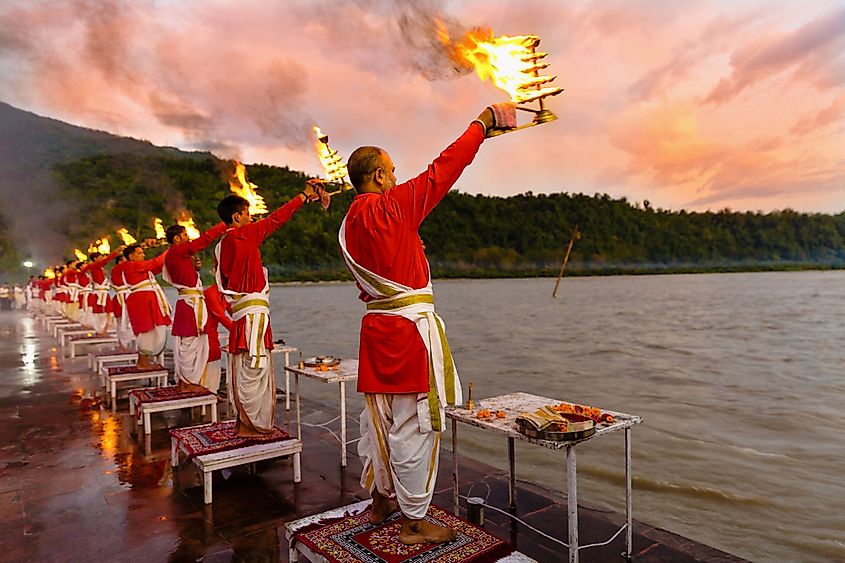
The Ganges River is considered to be the “most sacred” river by the Hindus and has a purely divine origin. As per the ancient scriptures, River Ganga had emerged from the feet of Lord Vishnu and is therefore also named “Vishnupadi”. The story of Goddess Ganga’s descent on Earth has been explained through the story of King Bhagirath and his ancestors. As per the legend, the sixty thousand sons of King Sagara were turned to ashes by the angry gaze of Sage Kapila. Their descendant King Bhagiratha had meditated for several years to please Goddess Ganga, and to bring her on Earth for washing away the sins of his ancestors. As per the request of King Bhagiratha, Lord Shiva upon Ganga’s arrival, caught the flow of the Ganga in his matted locks to save the Earth from the destructive powers of the cosmic waters of River Ganga. In honor of King Bhagiratha, the source stream of the River Ganges is named “Bhagirathi”. The waters of the River Ganga are considered pure, sacred, and purifying and the river is therefore considered as the absolver of all sins, providing a door towards salvation. The Makara or, Gharial is considered the vehicle of Goddess Ganga.
Ecology
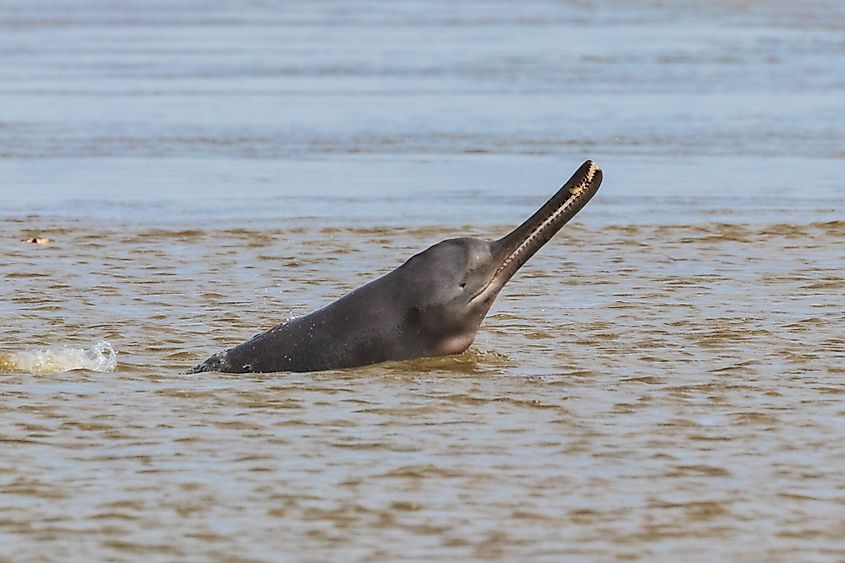
The Ganges River supports more than 140 species of fish, 90 species of amphibians, several reptiles, birds, and mammals. The Ganges River is home to many reptilian species like gharial, the saltwater crocodile, the mugger crocodile, three-striped roof turtle, Indian black turtle, etc. India’s National Aquatic Animal – the Ganges River Dolphin is found in the Ganges River. Many mammalian species like Bengal Tigers (in the mangrove swamps of the Ganges Delta), elephants, four-horned antelope, foxes, and leopards have been recorded in the upper Gangetic Plains.
Economy
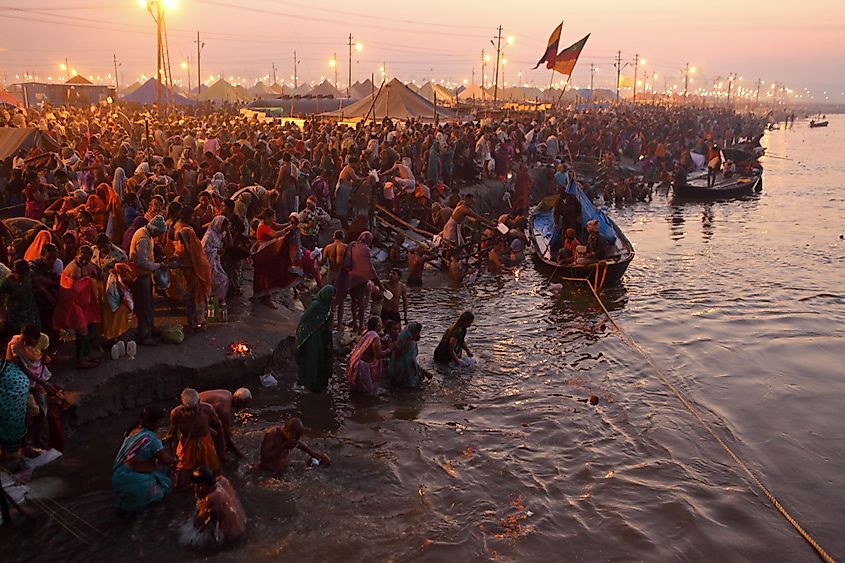
The Ganges Basin with its fertile alluvial soil provides support to the agricultural economies of India and Bangladesh. About half a billion people inhabit the regions along the banks of the River Ganges and depend on the waters of the river to sustain their needs. Some major cities and industrial towns are situated along the course of the river. Several ghats have been constructed along the river banks which are used for bathing, washing, and for performing cremations. Religious festivals like Kumbh Mela are held where more than 150 million pilgrims gather to take a holy dip in the Ganges.
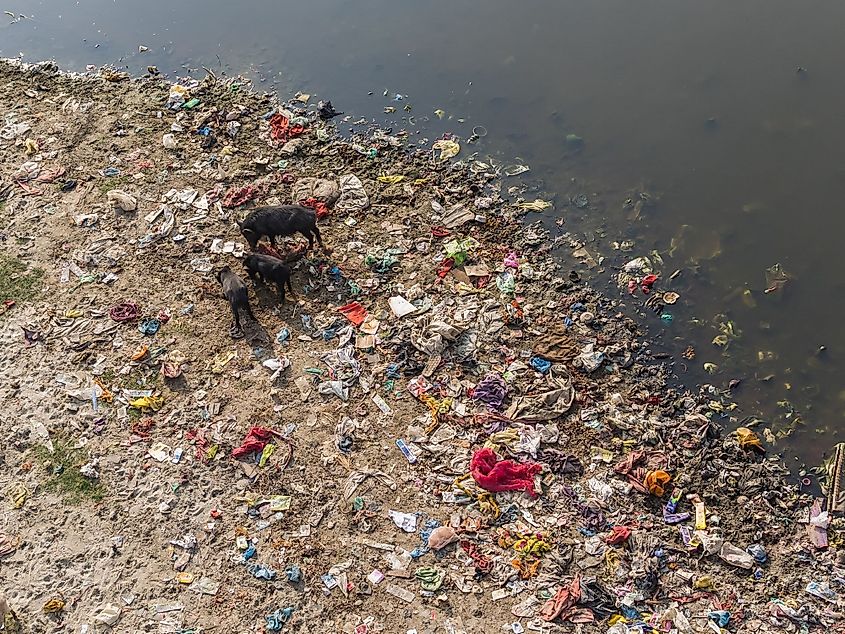
However, the River Ganges is considered one of the most polluted rivers in the world. The waters of the Ganges River become dirty due to the large number of drains that discharge harmful effluents and chemicals from the industries. The garbage from households also finds its way into the river. It has been found that the level of fecal coliform bacteria from human waste in the waters of the river is about 100 times higher than the permissible limit.











